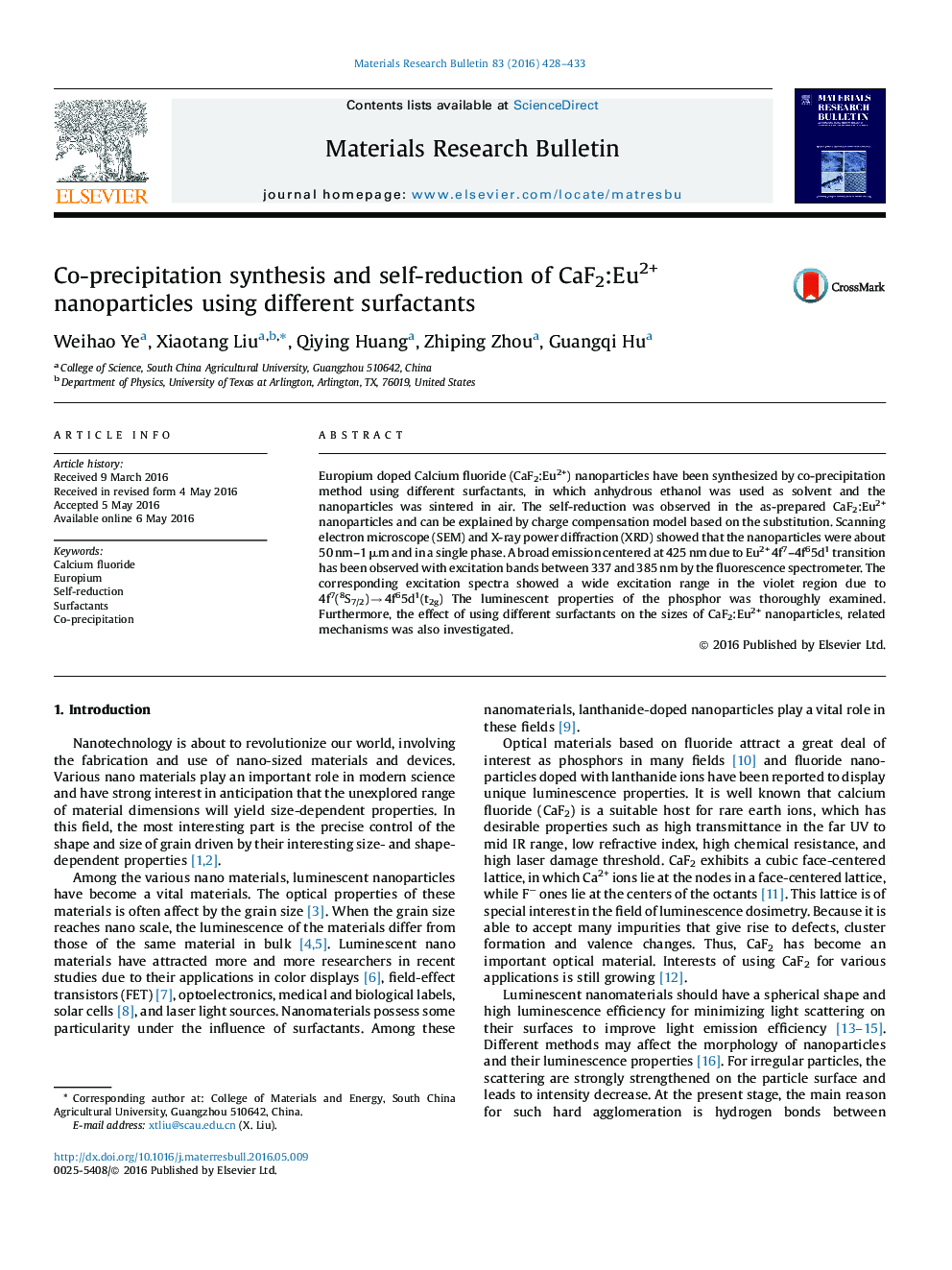| Article ID | Journal | Published Year | Pages | File Type |
|---|---|---|---|---|
| 1487051 | Materials Research Bulletin | 2016 | 6 Pages |
•CaF2:2.5%Eu2+ nanoparticles using different surfactants have been synthesized by co-precipitation method.•The reduction of Eu3+ → Eu2+ in CaF2 occurred in air can be explained by charge compensation model.•The results show that the surfactants affect differently on the particles.•The anionic surfactant induces a luminescence quenching phenomenon in CaF2:2.5%Eu2+ nanoparticles.•The nanoparticles with the cationic surfactant have uniform morphology and stable luminescent properties.
Europium doped Calcium fluoride (CaF2:Eu2+) nanoparticles have been synthesized by co-precipitation method using different surfactants, in which anhydrous ethanol was used as solvent and the nanoparticles was sintered in air. The self-reduction was observed in the as-prepared CaF2:Eu2+ nanoparticles and can be explained by charge compensation model based on the substitution. Scanning electron microscope (SEM) and X-ray power diffraction (XRD) showed that the nanoparticles were about 50 nm–1 μm and in a single phase. A broad emission centered at 425 nm due to Eu2+ 4f7–4f65d1 transition has been observed with excitation bands between 337 and 385 nm by the fluorescence spectrometer. The corresponding excitation spectra showed a wide excitation range in the violet region due to 4f7(8S7/2) → 4f65d1(t2g) The luminescent properties of the phosphor was thoroughly examined. Furthermore, the effect of using different surfactants on the sizes of CaF2:Eu2+ nanoparticles, related mechanisms was also investigated.
Graphical abstractFigure optionsDownload full-size imageDownload as PowerPoint slide
